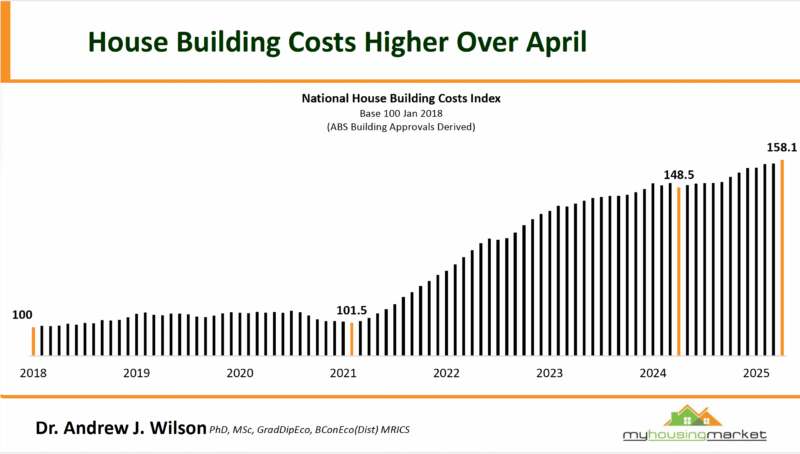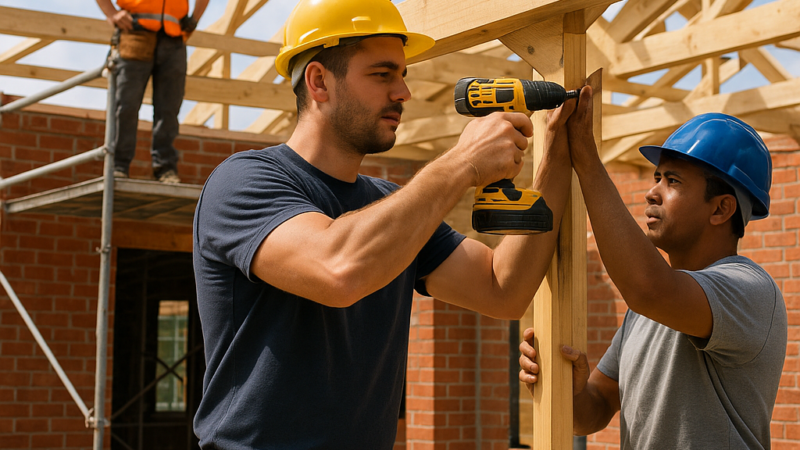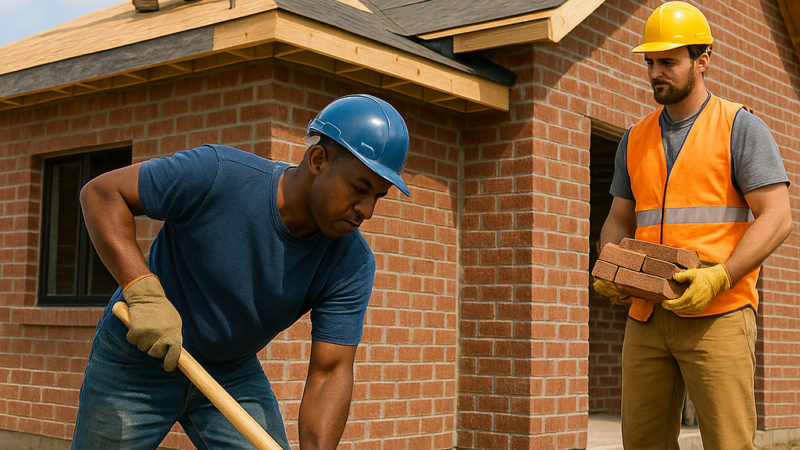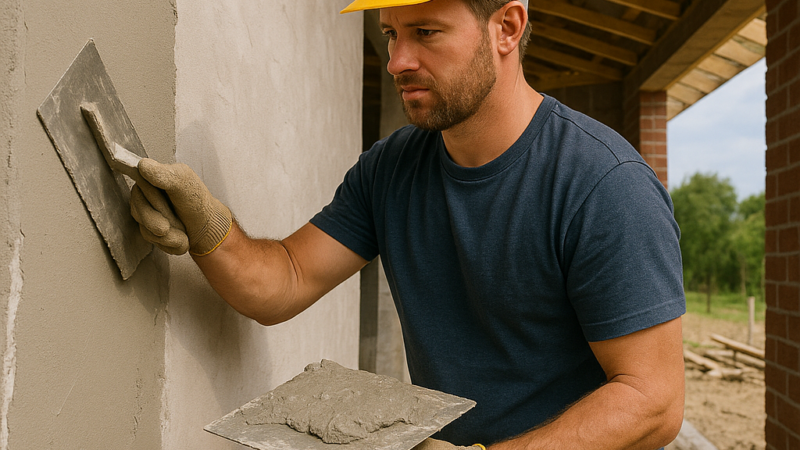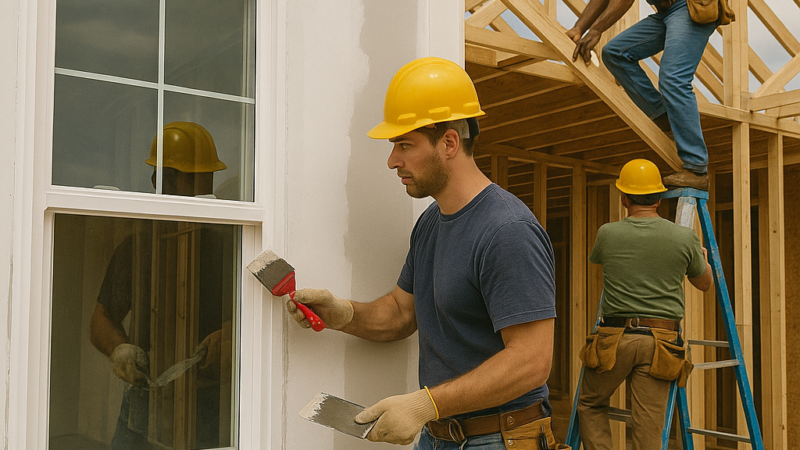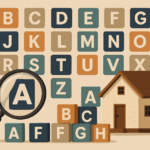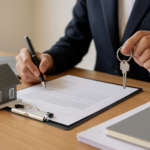
Key takeaways
The cost of building a new house in Australia has surged over the past few years as supply and trade shortages continue to weigh on the market.
And at the same time, the construction industry has seen a raft of insolvencies as rising labour costs, extreme weather, high material costs and shortages and global supply chain issues forced many builders to close their doors.
Construction costs vary considerably from state to state - as you'll read below
Are you considering building your dream home in Australia?
You’re not alone – but brace yourself.
In recent years, the cost of building has skyrocketed. So too has the time it takes to get a home out of the ground and move-in ready.
Why? A perfect storm of labour shortages, soaring material costs, global supply chain chaos, and wild weather events has sent shockwaves through the construction industry.
The result? A wave of builder collapses, and those still standing are now pricing projects cautiously – with hefty margins – just to stay afloat.
So what does this mean for you?
How much will it really cost to build a house in Australia today?
The honest answer? It’s complicated.
Or as the old saying goes: “How long is a piece of string?”
Source: Ray White
There are a number of different factors that can affect the cost of building a house, including but not limited to:
- The size of the dwelling - especially the number of bedrooms. In fact smaller homes can cost more per square metre to build, even if they have a lower overall cost
- The complexity of the design
- The location and the slope of the land
- The quality of the materials used and the fixtures and fittings
- Any construction delays
But with this in mind, there are some “ballpark figures” I can come up with, to give you a guide as to how much it may cost you to build a property.
But it’s worth keeping in mind that, when building a new home, the final cost of construction can differ vastly from the expectations set out at the building approval stage, and even at the start of construction.
Why?
There are numerous reasons for cost variation prior to and during construction - for example, costs and contracts may be finalised after council approval is sought or there may be unexpected delays and complications during construction.
To guestimate the cost of building a new home, consider the following:
- 40-45% of costs of the total cost to build is the cost of materials
- 35-40% of the total cost is labour
- There are many taxes and charges, insurance, and overheads
- And the builder would like to make a profit margin of around 15-20%
Why have building costs skyrocketed?
It all started a few years ago with COVID-related restrictions.
Thanks to volatile exchange rates, supply chains being impacted, and reduced productivity due to COVID-19 restrictions, floods and rains, costs have risen and the time to complete projects has dragged out pushing up the cost of construction.
Then there are the supply chain issues around the world due to the Russian-Ukraine war and things are getting worse.
The shortage of materials and labour is likely to significantly increase housing construction costs over the next couple of years.
Currently, the rate of increase in building costs is slowing and the supply chain is stabilising, but the critical shortage of skilled labour, compounded by the collapse of a number of building companies, is still keeping costs elevated.
And it's taking longer to construct the typical home.
Source: Ray White
Let's a look at how building costs have changed around Australia...
The latest CoreLogic - Cordell Construction Cost Index
National
The Cordell Construction Cost Index (CCCI) shows the growth in construction costs has risen 0.5% over the June quarter, after the three months to March (0.4%) recorded the lowest quarterly increase since March 2010 (also 0.4%).

The 12 months ending June 2025 saw the annual change in construction costs increase by 2.9%, up from 2.6% over the 12 months to June 2024.
The annual change in home building costs has been tracking at or below the pre-COVID decade average of 4.0% since the September quarter of 2023.
Cotality’s Research Director, Tim Lawless, commented:
“Growth in residential construction costs has increased a little compared to the previous quarter; however, when compared to the long-term average, the increase is tracking at half the pre-pandemic decade average of 1.0%.
That being said, the reacceleration is likely to weigh on inflation outcomes with the cost of new dwellings comprising the largest weight in the CPI calculation.”
He pointed to the annual rate of growth (ending June 2025), which saw construction costs increase by 2.9%, up from 2.6% over the 12 months to June 2024.

Source: Cotality
The Cordell costings team notes that costs have increased more compared to the relatively flat profile in the previous quarter, however when compared to long term average, the increase for this quarter remains low.
How much does it cost to build a house in Sydney?
Across NSW, the CCCI rose 0.5% over the June quarter, up slightly from the 0.4% rise seen over the March quarter and in line with the national growth rate.
This is the second lowest quarterly increase New South Wales has seen since March 2016 and is 40 basis points lower than the pre-COVID decade average of 0.9%.
Annually, NSW saw construction costs up 2.9% over the 12 months to June 2025 compared to a 3.1% rise over the 12 months to June 2024.

Source: Cotality
Cotality’s home value index showed dwelling values were up 1.1% over the three months to June across both Sydney and regional NSW.
As of June 2025, Sydney's median house value was $1,496,985, while the median unit value was $863,257.
Across regional NSW, the median house value was $802,895, while the median unit value was $637,733.
How much does it cost to build a house in Melbourne?
Victoria saw a 0.6% increase in construction costs over the three months to June, up from the 0.3% rise seen over the three months to March.
The Victorian CCCI increased by 2.7% over the year to June 2025, down from 3.0% over the 12 months to June 2024.
According to Cotality’s latest home value index, Melbourne dwelling values were up 1.1% over the June quarter, while Regional Vic saw dwelling values up 1.4% over the same period.
Melbourne's median house value came in at $947,611 in June, while the city's median unit value was $617,395.
Across regional Vic, the median house and unit value was $617,770 and $419,345, respectively.

Source: Cotality
How much does it cost to build a house in Brisbane?
At 0.4%, Queensland recorded the lowest quarterly rise in construction costs across the states, down from 0.6% over the previous quarter.
This is below the national growth rate of 0.5% and the lowest quarterly increase since the three months to June 2024 (0.3%).
Queensland's construction costs rose 3.4% over the year to June 2025, up from 1.9% over the 12 months to June 2024.

Source: Cotality
The Cotality Home Value Index saw dwelling values increase by 2.0% over the three months to June across both Brisbane and regional Qld.
As at June 2025, Brisbane's median house value was $1,010,566, while the median unit value was $718,196.
Across regional Qld, the median house value was $740,201, while the median unit value was $717,188.
How much does it cost to build a house in Perth?
In Western Australia, the latest CCCI showed a further 0.7% rise in construction costs over the June 2025 quarter, following a 0.5% rise over the three months to March.
WA's latest result is 20 basis points higher than the national quarterly increase (0.5%).
Annually, Western Australia's CCCI increased by 3.2% over the year to June, up from 2.0% over the 12 months to June 2024.

Source: Cotality
Cotality figures show Perth dwelling values were up 2.1% over the three months to June, while regional WA dwelling values increased by 2.7%.
As at June 2025, Perth’s median house value was $855,395, while the median unit value was $611,755.
Across regional WA, the median house value was $598,309, while the median unit value was $376,469.
How much does it cost to build a house in Adelaide?
South Australia saw the CCCI rise by 0.5% over the June quarter, following a 0.3% increase over the previous quarter.
The increase in construction costs across South Australia is in line with the national quarterly increase.
South Australia's 2.6% rise in construction costs over the year to June was up from a 2.3% rise over the 12 months to June last year.

Cotality figures show Adelaide dwelling values were up 1.1% over the June quarter, while regional SA dwelling values increased by 3.3% over the same period.
Adelaide’s median house value came in at $888,869 in June, while the city’s median unit value was $606,995.
Across regional SA, the median house and unit value was $503,052 and $332,429, respectively.
New code changes pushed up building costs even more
All residential construction must adhere to comprehensive building codes and standards governed by local and state laws which were introduced in 2023 and 2024 .
These updated home building codes were designed to ensure more liveable housing and energy efficiency but drove up the price of an average home by a further $30,000, according to the Master Builders Association.
Queensland MBA chief executive Paul Bidwell said the increases come on the back of a sharp increase in the cost to build a new home in the past three years.
“We have supported inclusive, sustainable and affordable housing and been in discussions with government and stakeholders for years – however, in the face of a housing crisis and rising costs, do not believe now is the right time to introduce these changes.”
Average house building costs in Australia
BMT Quantity Surveyors' latest report shows the average cost to build a house per square metre of new single and double-storey dwellings throughout Australia in 2024.
The costs in the table below are for Sydney, but you can still use them as a guide by applying one of the following regional variation percentages.
This will give you an approximate cost for the construction type per square metre in your area.
- Cairns - 110% - 130%
- Brisbane - 95% - 115%
- Sydney - 100% - 100%
- Canberra - 92% - 120%
- Melbourne - 95% - 105%
- Hobart - 95% - 120%
- Adelaide - 95% - 108%
- Perth - 98% - 120%
- Darwin - 110% - 135%
Average costs to build a house
| Construction type | Level of finish | ||
| Low | Medium | High | |
| 3BR weatherboard project home | $1,921 | $2,150 | $2260 |
| 3BR brick veneer project home | $2,047 | $2,280 | $2,723 |
| 3BR full brick project home | $2,127 | $2,363 | $2,954 |
| 4BR weatherboard home | $2,697 | $2,882 | $3,597 |
| 4BR brick veneer home | $2,866 | $3,001 | $3,777 |
| 4BR full brick home | $3,205 | $3,662 | $4,035 |
| 3BR brick veneer project home | $2,134 | $2,359 | $2,909 |
| 3BR full brick project home | $2,214 | $2,490 | $3,054 |
| 4BR brick veneer home | $2,909 | $3,288 | $3,816 |
| 4BR full brick home | $3,215 | $3,691 | $4,030 |
| Architecturally designed executive residence | $4,267 | $5,462 | $7,641 |
Source: BMT Quantity Surveyors
Average costs to build a townhouse
| Construction type | Level of finish | ||
| Low | Medium | High | |
| 2BR single-level brick veneer townhouse | $3,011 | $3,425 | $3,858 |
| 2BR 2-level brick veneer townhouse | $3,091 | $3,482 | $4,047 |
| 3BR single-level brick veneer townhouse | $2,982 | $3,396 | $3,815 |
| 3BR 2-level brick veneer townhouse | $3,063 | $3,568 | $4,062 |
Source: BMT Quantity Surveyors
Average costs to build units
| Construction type | Level of finish | ||
| Low | Medium | High | |
| 3-level walk-up unit complex | $3,169 | $3,402 | $4,128 |
| 3-level walk-up unit complex | $3,106 | $3,338 | $4,062 |
| 4-8 level unit complex | $3,621 | $3,896 | $4,719 |
| 4-8 level unit complex | $3,541 | $3,815 | $4,641 |
| 8 or more level unit complex | $3,757 | $4,264 | $5,422 |
Source: BMT Quantity Surveyors
Average industrial construction costs
| Construction type | Level of finish | ||
| Low | Medium | High | |
| High Bay Warehouse, standard configuration, concrete floor, metal clad | $1,555 | $1,756 | $1,893 |
| High Bay Warehouse, standard configuration, concrete floor, pre-cast concrete wall clad | $1,909 | $2,018 | $2,249 |
Source: BMT Quantity Surveyors
Average hotel construction costs
| Construction type | Level of finish | ||
| Low | Medium | High | |
| Single-level boutique motel including A/C, guest facilities | $5,025 | $5,749 | $7,558 |
| Single-level tavern/hotel including A/C, excluding loose item fit-out | $4,192 | $4,989 | $6,003 |
Source: BMT Quantity Surveyors
Average office construction costs
| Construction type | Level of finish | ||
| Low | Medium | High | |
| 1-4 level open plan offices | $3,266 | $3,641 | $4,278 |
| 4-8 level open plan offices, including A/C & lifts, excluding fit-out | $3,785 | $4,062 | $5,461 |
| 8 levels and over | $5,416 | $5,719 | $5,981 |
Source: BMT Quantity Surveyors
Average retail construction costs
| Construction type | Level of finish | ||
| Low | Medium | High | |
| Shopping mall | $4,079 | $4,252 | $4,758 |
| Supermarket | $2,583 | $2,758 | $3,091 |
Source: BMT Quantity Surveyors
The average cost to build a house by state
But average building costs per square metre by cities is just one factor to take into account when working out home building costs.
Because the answer is more complicated than it might seem.
That’s because the location, size, and cost of the block it’s built on and the finishes all affect how much it costs to build a house.
So the cost of building a house in Melbourne would be vastly different from the cost of building a house in Brisbane, or even the cost of building a house in Adelaide, Perth, or Sydney.
To give a rough idea, quantity surveyors RLB has also produced a recent report on the price of a home-build per square metre based on different states, which identifies Brisbane as the most expensive city for home building, with the price ranging from $2,500 to $4,500.
Sydney has a lower start price but a higher range, from $2,100 to $6,400, with Melbourne a more modest $2,000 to $4,300.
| City | Cost per square metre | |
| Low | High | |
| Adelaide | $1,740 | $3,800 |
| Brisbane | $2,500 | $4,500 |
| Canberra | $1,840 | $3,650 |
| Darwin | $1,900 | $2,950 |
| Melbourne | $2,000 | $4,300 |
| Perth | $2,200 | $4,100 |
| Sydney | $2,100 | $6,400 |
| Gold Coast | $1,600 | $4,400 |
Source: Rider Levett Bucknall
Average costs to build a new house by the number of bedrooms
So now we have a vague idea of how much it costs to build a house in Australia depending on the cost per metre square, location, size of the block, and even the fittings.
But what about the size?
It’s all well and good to get a ‘per square metre’ indication of price – but how do you translate that into actual costs, to give you an understanding of how much you’re going to pay to construct your new home or investment property?
There’s no point in going to the bank and saying, “I need to borrow $1,190 per square metre”.
They’re going to need a little more info to go on than that!
Builders and architects often use a per square metre (m2) figure to cost a project so this is a good baseline to work from, according to a page cost guide.
The average cost to build a 3-bedroom house
To build a 3-bedroom house you can expect to pay in the region of:
- $1,300 per square metre for a 3-bedroom weatherboard house on a level block, using budget materials
- $1,600 – $1,900 per square metre for a 3 bedroom full brick single level project home, on a level block, using mid-range to high-end materials and finishes
The average cost to build a 4-bedroom house
To build a 4-bedroom house you can expect to pay in the region of:
- $1,900 per square metre for a 4 bedroom single level, brick veneer home on a level block, using budget materials
- $2,400 per square metre for a 4 bedroom brick veneer single-level project home on a level block using mid-range finishes
- $2,900 per square metre for a 4 bedroom full brick two-level home on a level block using top-quality finishes
- $3,900+ per square metre for an architect-designed 4 bedroom full brick, two-level home on a level block using top-quality finishes
The average cost to build a 5-bedroom house or second-story
To build a 5-bedroom house you can expect to pay upwards of $4,300 per square metre.
If you want to know how much a second-story extension costs, expect to be charged anywhere from $1,850 to $3,300 per square metre, depending on the quality and price of the construction materials and inclusions.
So how much can you expect to pay?
First up, the figures I’ve detailed above are just a rough guide, as building costs can vary significantly based on your location, the project design, and the level of the fit-out.
And remember, a builder’s advertised base price is generally only a starting point and does not reflect how much your home will actually cost when it’s 100% completed.
This is because these “starting from” prices usually only include the basics.
If you are looking for a complete price that includes everything from the carpeting through to the landscaping and driveways as well as the white picket fence at the front, then you need to shop around for what’s known as a “turn-key” package – which means all you need to do at the end is turn the key and step inside.
And then there is the added recalculation needed depending on where the property is located, its size, and the quality of finishes.
It’s not as simple as getting one price quote - the cost of building a house varies widely depending on where and what you’re planning to build.
And this is even more so the case in today’s market where the cost of materials is consistently and steadily increasing, almost by the day.
Thanks to Australia’s rising inflation, almost every category of building materials has become more expensive.
And then the cost of an architecturally designed home to one built by a volume builder would differ again.
As mentioned earlier, there are a number of costs that come into play when building a house.
For a standard brick home without any custom finishes, you may be able to come up with a fairly clear budget.
However, once you start factoring in extras such as landscaping, driveways, retaining walls, fences, upgrades, finishes, and fittings, your costs can increase significantly.
We already know that the breakdown of the costs to build a house would differ depending on the size of the property, location, and finishes, but what about the hidden costs of building a house?
Here are a few costs you might have overlooked.
1. Site costs
These are the expenses that are incurred to prepare your block of land before construction can even commence.
These are usually completed by your builder and in most cases, the site costs are charged on top of the build price.
Some of the typical expenses involved in a site cost can be:
- Connections to services such as water, sewer, electricity, and gas
- Fences
- Retaining walls
- Site clearance (trees, roots, bushes)
- Site survey
- Soil tests
2. Other factors that can affect the build price
Once you have signed a contract with a builder and decided on the layout and design of your property, they will make plans and prepare documents, before arranging a ‘pre-start meeting’.
The pre-start meeting is at the stage at which your house plans are finalised.
They are approved by the council and you are ready to make your final choices in regards to all of the design aspects, such as wall colours, the types of light fittings, and the materials used on the roof and on floors.
The ‘prime costs’ are generally already in place by the builder, however, keep in mind that in base contract packages, the prices factored in often account for the cheapest materials, the most basic fittings, and the most standard fixtures.
If you wish to change any of these, you could incur an extra cost.
Some of the parts of the home that you may wish to ‘upgrade’ during this process include:
- Roof: Depending on the materials you choose for your roofs, such as tiles or colorbond, this can vary widely
- Tiling: An allowance for a tiling amount per sqm will be made, but this can change depending on the quality and size of your final choice.
- Fixtures and fittings: Fancy, nonstandard taps, and European appliances will obviously cost more than standard Australian-made fixtures and fittings. Additionally, labour costs may increase if you select items that are more complicated to install. Inclusions such as fully ducted air conditioning can cost up to $10,000 (more for a two-storey home).
- Kitchen: If you’ve ever shopped for a kitchen benchtop, you know how widely the costs of a kitchen upgrade can vary. Again, the final price will depend on the quality of the item you choose and what is in your initial specification in the contract.
- Electrical: If you decide to change your lighting layout from what has been initially drawn, this can add costs. For example, if the specifications in your contract allow for one standard light per room but you wish to have multiple downlights, this extra cost can add up.
3. Extra costs you should allow for
Some extra costs you need to take into account and which could end up costing you a significant amount of money include:
- Soil quality: One of the first things your engineers will organise is a soil test. They do this by drilling some boreholes and the best classification you can get is M classification soil. If your soil is more difficult to work with eg. Clay, Sand or Rock then you’re likely to have to pay extra.
- The slope of the block: The easiest site to build on is a flat block. If your block slopes you’re likely to have to pay extra for more foundations or to cut and fill the site (make it flat) and possibly for retaining walls.
- Flood-prone areas: some sites require the house to be raised with the floor level above natural ground level to cope with excessive rain or floods and this can add to the construction cost.
Learning the lingo
When you go through the process of building a home, you’ll come across plenty of industry jargon that can be tricky to understand – and even trickier to price.
Here are a couple of terms that may be included in your building contract, which are important to understand:
Provisional sums
A provisional sum is an estimated amount of money that is determined by the builder, according to how much they believe the relevant job or material will cost.
Often the builder can’t put a fixed cost on certain parts of the job at the time of providing a quote or signing the building contract because of unknowns.
For example, while your site may look flat and the builder quotes as such when starting the works, they may discover large clumps of rock that need to be removed and levelled prior to the slab being laid.
Or when the builder starts digging your foundations they realise they have to dig down further to hit firm footings, which will eventually require more concrete to be poured.
At times like this, you’ll need to pay an additional sum on top of the initial contract price, as the allowance that had been provided has been exceeded.

Note: It is always a good idea to budget for around 10% of the total build price to allow for fluctuations in provisional sum prices.
Prime costs
A prime cost is an item that is subject to change during the construction of your home.
These include things like fixtures and fittings such as tiles, doors, and taps, as these items may change depending on your final choice.
You’ll find an estimated amount is provided when signing the building contract and then depending on your specification of the finishes during the build, these prime cost items may cost more or less if you elect to change them along the way.

Note: These items generally only change due to your change in preferences, so this could be an opportunity to trim costs if you opt for basic or standard fixtures, fittings, and finishes.
How long does it take to build a home in 2025?
While the cost of building a home has clearly surged, so too has the price of buying an established property.
And with ongoing supply chain pressures and labour shortages, we may well see further price hikes ahead.
Remember, the final cost of your build depends on a host of factors – size, location, complexity, and the level of finishes you choose.
Opting for a display home with cost efficiencies built in can help keep prices down, whereas creating a one-of-a-kind dream home will naturally carry a premium.
The bottom line? Building your own home is still a fantastic way to get exactly what you want – but in today’s market, it pays to plan carefully, budget generously, and work with experienced professionals who can guide you through the process and help you avoid unexpected pitfalls.



